Martin Strohmeier
SATversary: Adversarial Attacks on Satellite Fingerprinting
Jun 06, 2025Abstract:As satellite systems become increasingly vulnerable to physical layer attacks via SDRs, novel countermeasures are being developed to protect critical systems, particularly those lacking cryptographic protection, or those which cannot be upgraded to support modern cryptography. Among these is transmitter fingerprinting, which provides mechanisms by which communication can be authenticated by looking at characteristics of the transmitter, expressed as impairments on the signal. Previous works show that fingerprinting can be used to classify satellite transmitters, or authenticate them against SDR-equipped attackers under simple replay scenarios. In this paper we build upon this by looking at attacks directly targeting the fingerprinting system, with an attacker optimizing for maximum impact in jamming, spoofing, and dataset poisoning attacks, and demonstrate these attacks on the SatIQ system designed to authenticate Iridium transmitters. We show that an optimized jamming signal can cause a 50% error rate with attacker-to-victim ratios as low as -30dB (far less power than traditional jamming) and demonstrate successful identity forgery during spoofing attacks, with an attacker successfully removing their own transmitter's fingerprint from messages. We also present a data poisoning attack, enabling persistent message spoofing by altering the data used to authenticate incoming messages to include the fingerprint of the attacker's transmitter. Finally, we show that our model trained to optimize spoofing attacks can also be used to detect spoofing and replay attacks, even when it has never seen the attacker's transmitter before. Furthermore, this technique works even when the training dataset includes only a single transmitter, enabling fingerprinting to be used to protect small constellations and even individual satellites, providing additional protection where it is needed the most.
Neural Exec: Learning (and Learning from) Execution Triggers for Prompt Injection Attacks
Mar 06, 2024

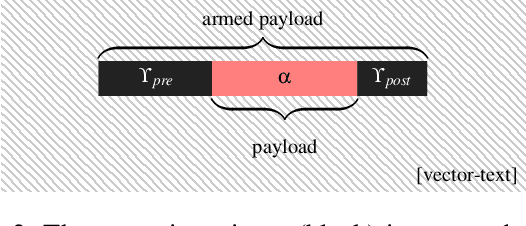

Abstract:We introduce a new family of prompt injection attacks, termed Neural Exec. Unlike known attacks that rely on handcrafted strings (e.g., "Ignore previous instructions and..."), we show that it is possible to conceptualize the creation of execution triggers as a differentiable search problem and use learning-based methods to autonomously generate them. Our results demonstrate that a motivated adversary can forge triggers that are not only drastically more effective than current handcrafted ones but also exhibit inherent flexibility in shape, properties, and functionality. In this direction, we show that an attacker can design and generate Neural Execs capable of persisting through multi-stage preprocessing pipelines, such as in the case of Retrieval-Augmented Generation (RAG)-based applications. More critically, our findings show that attackers can produce triggers that deviate markedly in form and shape from any known attack, sidestepping existing blacklist-based detection and sanitation approaches.
Secret Collusion Among Generative AI Agents
Feb 12, 2024



Abstract:Recent capability increases in large language models (LLMs) open up applications in which teams of communicating generative AI agents solve joint tasks. This poses privacy and security challenges concerning the unauthorised sharing of information, or other unwanted forms of agent coordination. Modern steganographic techniques could render such dynamics hard to detect. In this paper, we comprehensively formalise the problem of secret collusion in systems of generative AI agents by drawing on relevant concepts from both the AI and security literature. We study incentives for the use of steganography, and propose a variety of mitigation measures. Our investigations result in a model evaluation framework that systematically tests capabilities required for various forms of secret collusion. We provide extensive empirical results across a range of contemporary LLMs. While the steganographic capabilities of current models remain limited, GPT-4 displays a capability jump suggesting the need for continuous monitoring of steganographic frontier model capabilities. We conclude by laying out a comprehensive research program to mitigate future risks of collusion between generative AI models.
Watch This Space: Securing Satellite Communication through Resilient Transmitter Fingerprinting
May 11, 2023Abstract:Due to an increase in the availability of cheap off-the-shelf radio hardware, spoofing and replay attacks on satellite ground systems have become more accessible than ever. This is particularly a problem for legacy systems, many of which do not offer cryptographic security and cannot be patched to support novel security measures. In this paper we explore radio transmitter fingerprinting in satellite systems. We introduce the SatIQ system, proposing novel techniques for authenticating transmissions using characteristics of transmitter hardware expressed as impairments on the downlinked signal. We look in particular at high sample rate fingerprinting, making fingerprints difficult to forge without similarly high sample rate transmitting hardware, thus raising the budget for attacks. We also examine the difficulty of this approach with high levels of atmospheric noise and multipath scattering, and analyze potential solutions to this problem. We focus on the Iridium satellite constellation, for which we collected 1010464 messages at a sample rate of 25 MS/s. We use this data to train a fingerprinting model consisting of an autoencoder combined with a Siamese neural network, enabling the model to learn an efficient encoding of message headers that preserves identifying information. We demonstrate the system's robustness under attack by replaying messages using a Software-Defined Radio, achieving an Equal Error Rate of 0.120, and ROC AUC of 0.946. Finally, we analyze its stability over time by introducing a time gap between training and testing data, and its extensibility by introducing new transmitters which have not been seen before. We conclude that our techniques are useful for building systems that are stable over time, can be used immediately with new transmitters without retraining, and provide robustness against spoofing and replay by raising the required budget for attacks.
Perfectly Secure Steganography Using Minimum Entropy Coupling
Oct 24, 2022



Abstract:Steganography is the practice of encoding secret information into innocuous content in such a manner that an adversarial third party would not realize that there is hidden meaning. While this problem has classically been studied in security literature, recent advances in generative models have led to a shared interest among security and machine learning researchers in developing scalable steganography techniques. In this work, we show that a steganography procedure is perfectly secure under \citet{cachin_perfect}'s information theoretic-model of steganography if and only if it is induced by a coupling. Furthermore, we show that, among perfectly secure procedures, a procedure is maximally efficient if and only if it is induced by a minimum entropy coupling. These insights yield what are, to the best of our knowledge, the first steganography algorithms to achieve perfect security guarantees with non-trivial efficiency; additionally, these algorithms are highly scalable. To provide empirical validation, we compare a minimum entropy coupling-based approach to three modern baselines -- arithmetic coding, Meteor, and adaptive dynamic grouping -- using GPT-2 and WaveRNN as communication channels. We find that the minimum entropy coupling-based approach yields superior encoding efficiency, despite its stronger security constraints. In aggregate, these results suggest that it may be natural to view information-theoretic steganography through the lens of minimum entropy coupling.
Fixed Points in Cyber Space: Rethinking Optimal Evasion Attacks in the Age of AI-NIDS
Nov 23, 2021



Abstract:Cyber attacks are increasing in volume, frequency, and complexity. In response, the security community is looking toward fully automating cyber defense systems using machine learning. However, so far the resultant effects on the coevolutionary dynamics of attackers and defenders have not been examined. In this whitepaper, we hypothesise that increased automation on both sides will accelerate the coevolutionary cycle, thus begging the question of whether there are any resultant fixed points, and how they are characterised. Working within the threat model of Locked Shields, Europe's largest cyberdefense exercise, we study blackbox adversarial attacks on network classifiers. Given already existing attack capabilities, we question the utility of optimal evasion attack frameworks based on minimal evasion distances. Instead, we suggest a novel reinforcement learning setting that can be used to efficiently generate arbitrary adversarial perturbations. We then argue that attacker-defender fixed points are themselves general-sum games with complex phase transitions, and introduce a temporally extended multi-agent reinforcement learning framework in which the resultant dynamics can be studied. We hypothesise that one plausible fixed point of AI-NIDS may be a scenario where the defense strategy relies heavily on whitelisted feature flow subspaces. Finally, we demonstrate that a continual learning approach is required to study attacker-defender dynamics in temporally extended general-sum games.
SLAP: Improving Physical Adversarial Examples with Short-Lived Adversarial Perturbations
Jul 08, 2020
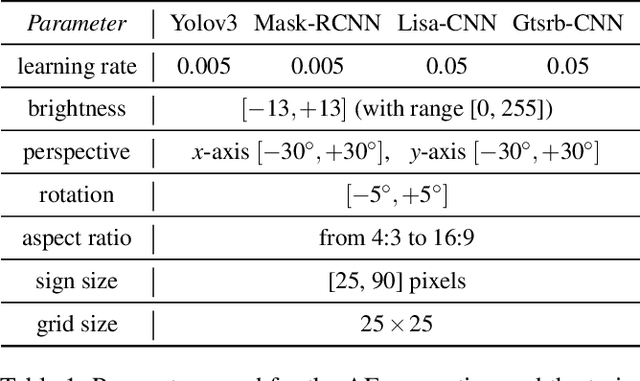
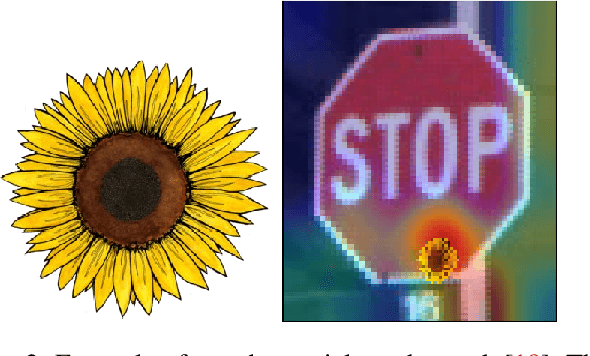
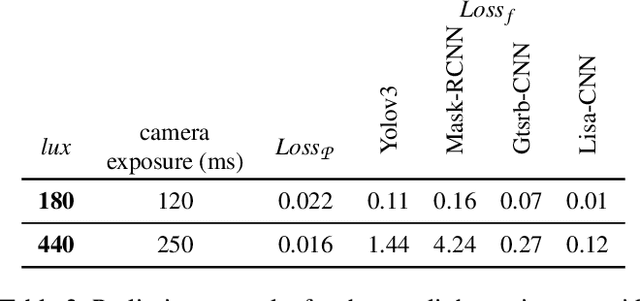
Abstract:Whilst significant research effort into adversarial examples (AE) has emerged in recent years, the main vector to realize these attacks in the real-world currently relies on static adversarial patches, which are limited in their conspicuousness and can not be modified once deployed. In this paper, we propose Short-Lived Adversarial Perturbations (SLAP), a novel technique that allows adversaries to realize robust, dynamic real-world AE from a distance. As we show in this paper, such attacks can be achieved using a light projector to shine a specifically crafted adversarial image in order to perturb real-world objects and transform them into AE. This allows the adversary greater control over the attack compared to adversarial patches: (i) projections can be dynamically turned on and off or modified at will, (ii) projections do not suffer from the locality constraint imposed by patches, making them harder to detect. We study the feasibility of SLAP in the self-driving scenario, targeting both object detector and traffic sign recognition tasks. We demonstrate that the proposed method generates AE that are robust to different environmental conditions for several networks and lighting conditions: we successfully cause misclassifications of state-of-the-art networks such as Yolov3 and Mask-RCNN with up to 98% success rate for a variety of angles and distances. Additionally, we demonstrate that AE generated with SLAP can bypass SentiNet, a recent AE detection method which relies on the fact that adversarial patches generate highly salient and localized areas in the input images.
Classi-Fly: Inferring Aircraft Categories from Open Data
Jul 30, 2019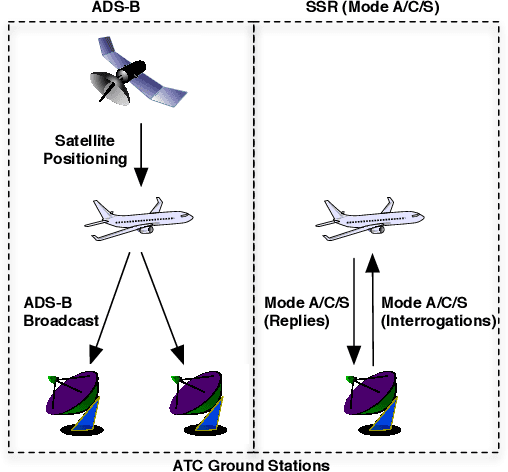

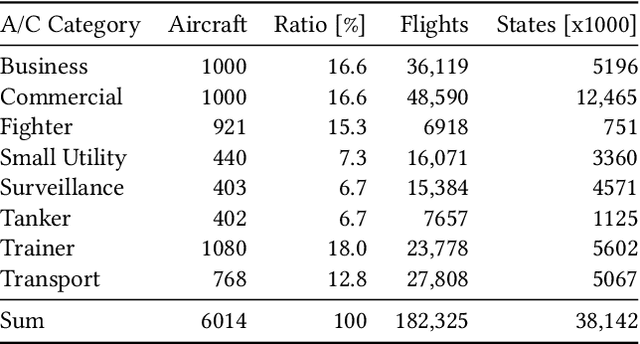
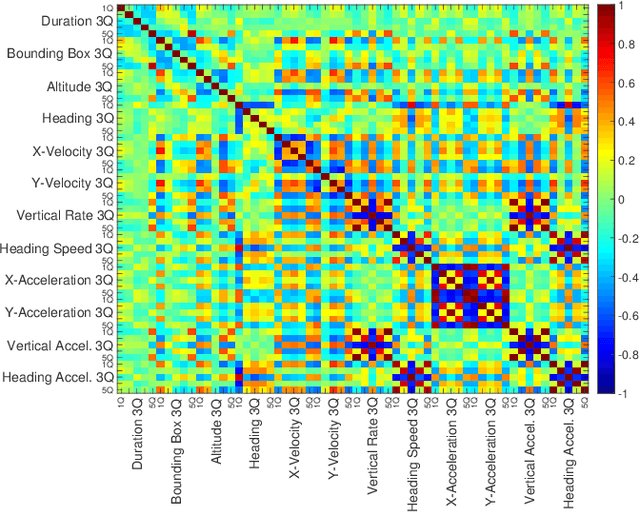
Abstract:In recent years, air traffic communication data has become easy to access, enabling novel research in many fields. Exploiting this new data source, a wide range of applications have emerged, from weather forecasting to stock market prediction, or the collection of intelligence about military and government movements. Typically these applications require knowledge about the metadata of the aircraft, specifically its operator and the aircraft category. armasuisse Science + Technology, the R&D agency for the Swiss Armed Forces, has been developing Classi-Fly, a novel approach to obtain metadata about aircraft based on their movement patterns. We validate Classi-Fly using several hundred thousand flights collected through open source means, in conjunction with ground truth from publicly available aircraft registries containing more than two million aircraft. We show that we can obtain the correct aircraft category with an accuracy of over 88%. In cases, where no metadata is available, this approach can be used to create the data necessary for applications working with air traffic communication. Finally, we show that it is feasible to automatically detect sensitive aircraft such as police and surveillance aircraft using this method.
 Add to Chrome
Add to Chrome Add to Firefox
Add to Firefox Add to Edge
Add to Edge